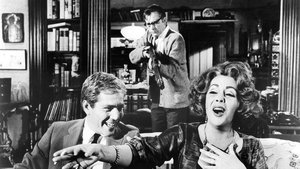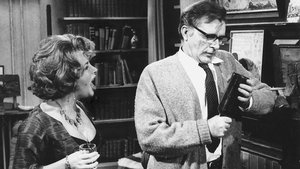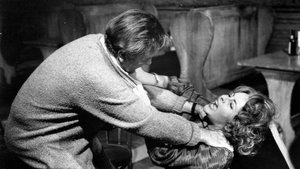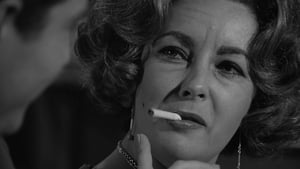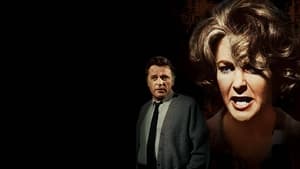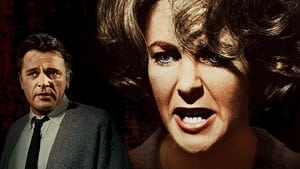Video Sources 0 Views
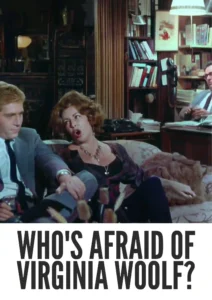
Download Who’s Afraid of Virginia Woolf? (1966) Colorized HD | Elizabeth Taylor | Intense Drama Classic
Synopsis

Prepare to be captivated by Who’s Afraid of Virginia Woolf?, the landmark 1966 drama directed by Mike Nichols. This film, starring Elizabeth Taylor and Richard Burton, depicts a searing and unforgettable night in the lives of a married couple. Now, experience this cinematic masterpiece like never before with a meticulously crafted colorized version that adds a new dimension to the film’s raw emotional power. This HD download is perfect for those who appreciate intense character studies and groundbreaking performances.
Who’s Afraid of Virginia Woolf? unfolds on a New England college campus, where George, a history professor, and Martha, his wife and the daughter of the university president, return home late one evening after a party. Martha invites a young, newly married couple, Nick and Honey, over for drinks. As the night progresses, the alcohol flows freely, and the atmosphere becomes increasingly charged.
George and Martha engage in a series of cruel and cutting verbal games, revealing the deep-seated resentments and frustrations that plague their marriage. Nick and Honey, initially polite and naive, find themselves drawn into the couple’s toxic dynamic. They are soon entangled in the older couple’s emotional games.
As secrets are revealed and tensions escalate, the night spirals out of control, leading to a series of confrontations and emotional breakdowns. The film explores themes of truth, illusion, love, hate, and the destructive power of secrets. Who’s Afraid of Virginia Woolf? is a powerful and unflinching portrayal of the complexities of human relationships.
The film features a powerhouse cast, each delivering unforgettable performances:
-
Elizabeth Taylor as Martha
-
Richard Burton as George
-
George Segal as Nick
-
Sandy Dennis as Honey
Who’s Afraid of Virginia Woolf? is a drama that delves into the complexities of marriage, truth, and illusion.
Released in 1966, Who’s Afraid of Virginia Woolf? was a groundbreaking film that challenged the conventions of Hollywood cinema. Its unflinching portrayal of marital discord and its use of explicit language and themes shocked audiences and critics alike. The film was a major critical and commercial success, earning numerous awards and nominations, and cementing its place as a landmark of American cinema.
This colorized version of Who’s Afraid of Virginia Woolf? has been carefully restored using modern digital techniques. This enhances the visual impact while preserving the film’s original intensity. The colorization process involved extensive research and attention to detail, ensuring that the colors accurately reflect the film’s tone and atmosphere. This meticulous process breathes new life into the characters and settings, making the story even more engaging for modern audiences. While the decision to colorize classic films is often debated, it introduces these films to a broader audience, ensuring their lasting appeal for generations to come.
-
: Mike Nichols
-
: Ernest Lehman
-
: Edward Albee
-
: Haskell Wexler
-
: Sam O’Steen
-
: Warner Bros.
-
: 131 minutes
-
: MP4
-
: HD (1080p)
-
: Compatible with most devices, including smartphones, tablets, computers, and smart TVs.
Who’s Afraid of Virginia Woolf? (1966) is widely regarded as one of the greatest films ever made. It is praised for its powerful performances, its sharp dialogue, and its unflinching portrayal of marital conflict. The film has had a lasting impact on cinema and continues to be studied and admired by filmmakers and audiences alike.
-
: What is Who’s Afraid of Virginia Woolf? about?
-
A: Who’s Afraid of Virginia Woolf? is a drama about a married couple who engage in a series of cruel and cutting verbal games over the course of one night.
-
-
: Is Who’s Afraid of Virginia Woolf? (1966) a well-known film?
-
A: Yes, Who’s Afraid of Virginia Woolf? is a highly acclaimed and widely recognized classic of American cinema.
-
-
: Is this version of Who’s Afraid of Virginia Woolf? colorized?
-
A: Yes, this version has been professionally colorized to enhance the viewing experience.
-
-
: What makes Who’s Afraid of Virginia Woolf? interesting for classic film fans?
-
A: Who’s Afraid of Virginia Woolf? offers a powerful and unflinching portrayal of human relationships, featuring unforgettable performances and sharp dialogue.
-
-
: What is the download format?
-
A: The download format is MP4, which is compatible with most devices.
-
-
: What resolution is the download?
-
A: The resolution is HD (1080p), providing a high-quality viewing experience.
-
Watch Who’s Afraid of Virginia Woolf? Today!
